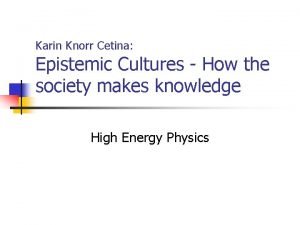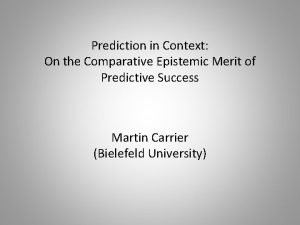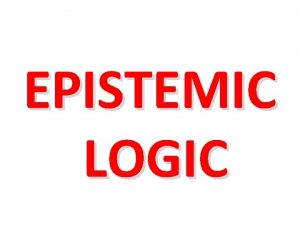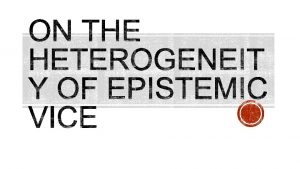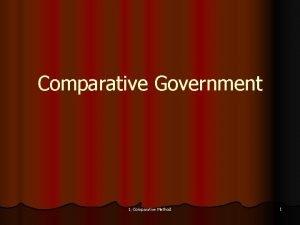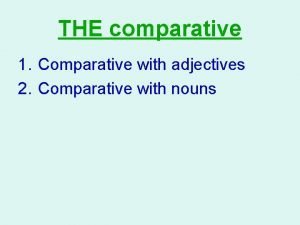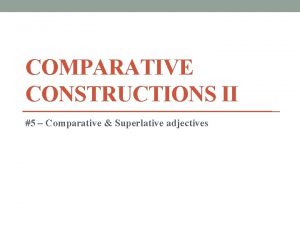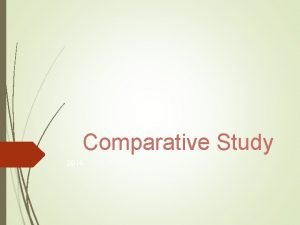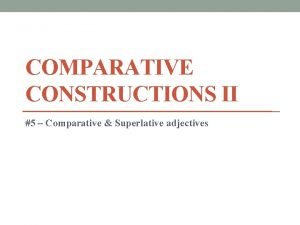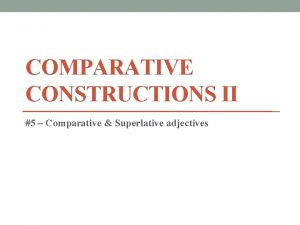Prediction in Context On the Comparative Epistemic Merit


















- Slides: 18

Prediction in Context: On the Comparative Epistemic Merit of Predictive Success Martin Carrier (Bielefeld University)

1. Predictive Novelty vs. Coherence as Epistemic Merits Prediction stands out among the traditional criteria of epistemic merit in science. Heather Douglas (2009) demanded to supplement the emphasis on explanation with an equal emphasis on prediction. Her claim is that ceteris paribus prediction is epistemically superior to accommodation. The epistemic role of predictions is to provide demanding test instances for theories; predictions serve to test explanations.

However: conflict between the requirement that a theory produce novel predictions and the demand that it match the state of knowledge. Novel predictions anticipate surprising phenomena that go beyond the system of knowledge and tend to be inconsistent with it. Thus predictive power and coherence with the background knowledge are conditions that tend to point in opposite directions. The existence of competing standards suggests that the emphasis on prediction shouldn’t be exaggerated. What is the merit of predictions if science leaves the controlled conditions of the lab and struggles with the intricacy of the world?

2. Prediction in Application-Oriented Research Endeavors In application-oriented research, prediction is assumed to play a key role. Targeted intervention in natural processes requires the ability to anticipate the results of one’s action. => Ambivalent views on the proper role of prediction in science: It is complained, on the one hand, that explanation has eclipsed prediction, whereas it is contended, on the other, that prediction has eclipsed explanation. => Question as to the relationship of predictive strength to explanatory power.

Biotechnology of the 1990 s: the ability to anticipate the outcome of one’s interventions is decoupled from any deeper understanding. Predictive strength and theoretical understanding are assessed as contrasting virtues. In contrast: the power to anticipate is more dependent on the ability to explain than many practitioners believe. Use of trigger genes for getting a complex activity of gene expression underway. Trigger genes act as starters so that switching them on allows one to set a cascade of processes in motion.

=> There is no need to disentangle this chain of events in order to anticipate the effect. The activation of eyeless initiates eye formation in flies: appropriate stimulation produces eyes in the legs or wings of flies. Artificially induced eyes in drosophila The identification of trigger genes was assumed to enable biotechnologists to anticipate the outcome of their intervention without being able to follow out the underlying causal chains. Biotechnologists: prediction does not always rely on understanding. The transition from genomics to proteomics involves a conceptual revolution which does not affect, however, the technical role of the gene.

Biotechnologists: Genes can still be used as tools for bringing about effects and anticipating the outcome of an intervention. => The correctness of predictions is independent, in large measure, from the truth of more fundamental, high-brow theories. However, this one-sided emphasis on prediction and the corresponding neglect of explanation turned out to be a failure. In general, the genetic and non-genetic contexts need to be taken into account.

“Distalless” gene: acts in a more specific way and affects embryonic development differently. Caterpillar embryo: formation of legs. developed butterfly: wing pattern.

The strong emphasis on prediction in application-oriented research can be seen as a bias that may hurt the epistemic culture of science. Worse yet, neglecting explanation may hurt predictive strength. Douglas requires to bring prediction back into philosophical accounts of explanation. But: converse demand to bring back explanation into accounts of prediction. Predictive strength needs to be placed in a network of other merits and achievements. Interconnection Processes

3. The Role of Prediction in Expert Judgment So far: In some practical contexts predictive power does not play the outstanding role sometimes accredited to it. Prediction is a great team player but a lousy soloist. Now: scientific expertise: policy advice on the basis of scientific knowledge. Problems in need of expertise are often complex. But often the details can be ignored in favor of expounding the distinctive features.

“Epistemic robustness”: the recommendation remains unchanged if the pertinent causal factors and factual conditions fluctuate or are unknown. Epistemic robustness is an important objective for scientific expertise since addressing the minute particulars is often immaterial for deciding about how to respond to a practical challenge. Robustness—and what it‘s worth Robustness is a quality standard characteristic for expertise. It replaces precision as a chief virtue of predictions in epistemic science. The commitment to epistemic robustness tends to reduce the importance of accurate predictions.

Widespread belief: expert recommendations may be based on observational regularities alone. => Explanation and prediction are severed from each other. However: observed regularities are paradigm instances of nonrobust knowledge. Tying prediction to explanation is sometimes a good guide for enhancing the robustness of the prediction.

4. The Significance of Prediction in Pursuing Research Policies Possibility to anticipate the success of certain types of research projects. Prospects of demanddriven research policies: outcome-focused projects guided by practical requirements. The successful pursuit of demand-driven research programs requires to anticipate probable novel results emerging along certain research paths.

However: it is often deemed impossible to foresee the outcome of research projects. Vannevar Bush (1945): science policy for stimulating progress in practical matters: funding of basic research. The assumed impossibility of anticipating research outcome is taken to make any demand-driven research policy fail; only a knowledge-driven policy can be expected to yield fruitful results. However, this unpredictability claim is in need of serious qualification.

Successful demand-driven research: The Human Genome Project The Manhattan Project The empirical record of attempts to produce research outcome on demand is mixed. The relevant variability can be accounted for to some extent by the degree to which the pertinent theoretical framework was staked out. The Discovery and Use of Giant Magnetoresistance

Yet incomplete knowledge of the fundamentals does not always thwart practical research endeavors. The “X 1, ” the first supersonic aircraft, was designed in 1947 by ignoring fluid dynamics and by relying instead on practical knowledge and on experience with high speeds. => It is a precarious endeavor to predict possible research outcome and to assess the prospects of research projects

Prima-facie plausibility: the successful stimulation of demanddriven research requires understanding the epistemic processes in science. Bringing Bacon’s claim about the relationship between understanding and intervention to bear on science studies produces the assertion that a targeted intervention in science presupposes a thorough understanding of science. Yet Bacon’s claim is not universally true. Some technological breakthroughs rely on fundamental understanding but others don’t.

5. Conclusion Prediction plays a less than pronounced role in the context of practice. It is true, predicting the results of human action is a key feature of science turned practical. However, bare predictions do not count for much. First, predictions need to be integrated into an explanatory framework if they are supposed to guide actions reliably. Second, the preference for precise predictions in epistemic research is supplanted with the objective of specifying a robust corridor of estimates. Finally, it is highly uncertain to predict the success of research projects.
 Epistemic modality
Epistemic modality Karin knorr cetina
Karin knorr cetina Epistemic modality
Epistemic modality Epistemic modality
Epistemic modality Merit pridiction
Merit pridiction Communicating across generational differences
Communicating across generational differences Physical context and linguistic context
Physical context and linguistic context Soal essay komunikasi nonverbal
Soal essay komunikasi nonverbal High context vs low context culture ppt
High context vs low context culture ppt Thế nào là hệ số cao nhất
Thế nào là hệ số cao nhất Sơ đồ cơ thể người
Sơ đồ cơ thể người Tư thế ngồi viết
Tư thế ngồi viết đặc điểm cơ thể của người tối cổ
đặc điểm cơ thể của người tối cổ Cái miệng nó xinh thế
Cái miệng nó xinh thế Hát kết hợp bộ gõ cơ thể
Hát kết hợp bộ gõ cơ thể Mật thư anh em như thể tay chân
Mật thư anh em như thể tay chân ưu thế lai là gì
ưu thế lai là gì Tư thế ngồi viết
Tư thế ngồi viết Voi kéo gỗ như thế nào
Voi kéo gỗ như thế nào

